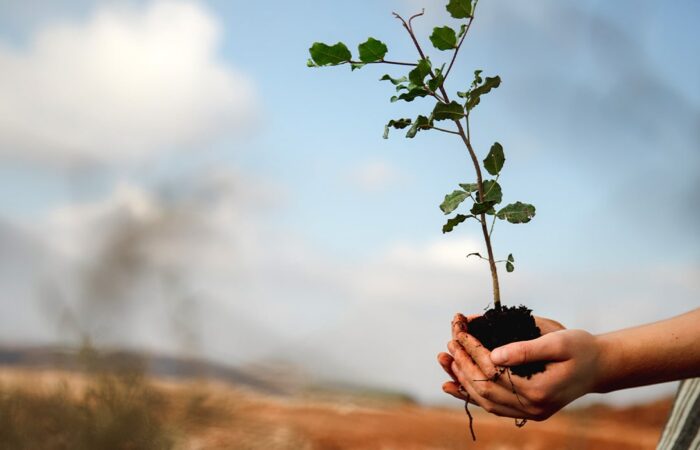Arriving at Ben Gurion Airport in Tel-Aviv ushers in the beautiful coastal sights, but after a short drive, the desolation and destruction that occurred thousands of years ago becomes an undeniable reality. Many groups and people have plans to reforest the mountains of Israel, but this brings to the surface a disheartening question: can the desolation in Israel be reversed and can the desert become a forest again?
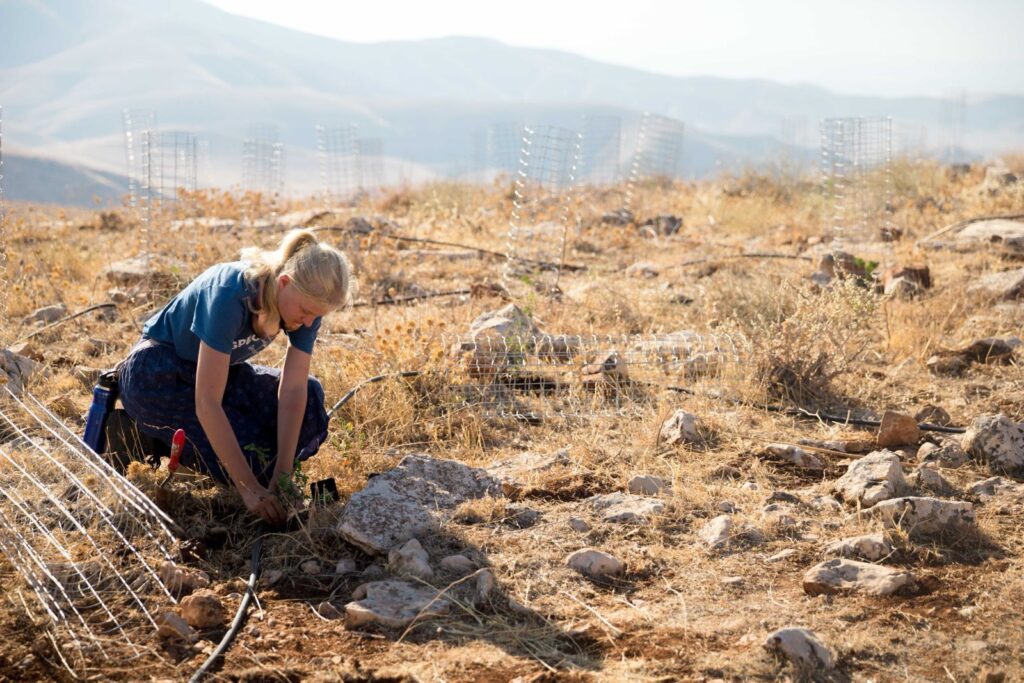
How Did the Desolation Happen?
The mountainsides that were once carpeted with forests became desolate following the felling of trees from the Roman siege and, later, the Ottoman felling for train tracks. These two forces of destruction created the fallow scenes of today.
The absence of the forests wrought havoc on the formerly lush region; the topsoil eroded and the weather patterns were altered. This produced a near-desert climate whose aridity has made it extremely challenging to replant the mountainsides, but not impossible to reforest the forlorn landscapes.
How Does a Desert Become a Forest?
When a tree is planted in the Holy Land, a type of miracle occurs. The process of restoration is far more complex than what anyone may think, but the complexity is what makes the restoration a touchable reality.
To begin the redemptive tale of a tree, the best place to begin is on the Mount of Blessing. Despite the arid climate, this location is an ideal place to promote the rehabilitation of flora in Israel. At nearly 900 meters, the mountain receives a type of rain called “orographic rain”. This occurs when rain bearing clouds travel from the sea and up the steep mountain slopes. Along with this ascent comes lower temperatures and, in turn, high levels of condensation. In fact, locations like South Africa can receive up to 128 inches of precipitation from orographic rain. If this type of rain can be so beneficial, why is the land still so barren?
Though orographic rain is beneficial, it still is not enough to provide ample water to the heat stricken flora in Israel. The second reason for the aridity is the soil. Felling from centuries prior left the soil defenseless against the turbulent weather. These factors give the impression that reforestation is a lost cause; flora can’t survive without good soil and water, right?
Several elements go into how nature operates and survives. Even small things in nature that you wouldn’t expect! For example, red foliage can decrease the temperature by up to 36 degrees Fahrenheit more than green foliage. In just that miniscule example, it is clear to see that the science of forests goes far beyond what meets the eye.
Facts like that are fun to share at a dinner table to impress your friends, but they don’t explain how it’s possible that a desert can become a forest. Though the long-term process is complex, the initial step is actually quite simple and something anyone can do: plant a tree.
How Can One Tree Have That Big of an Impact?
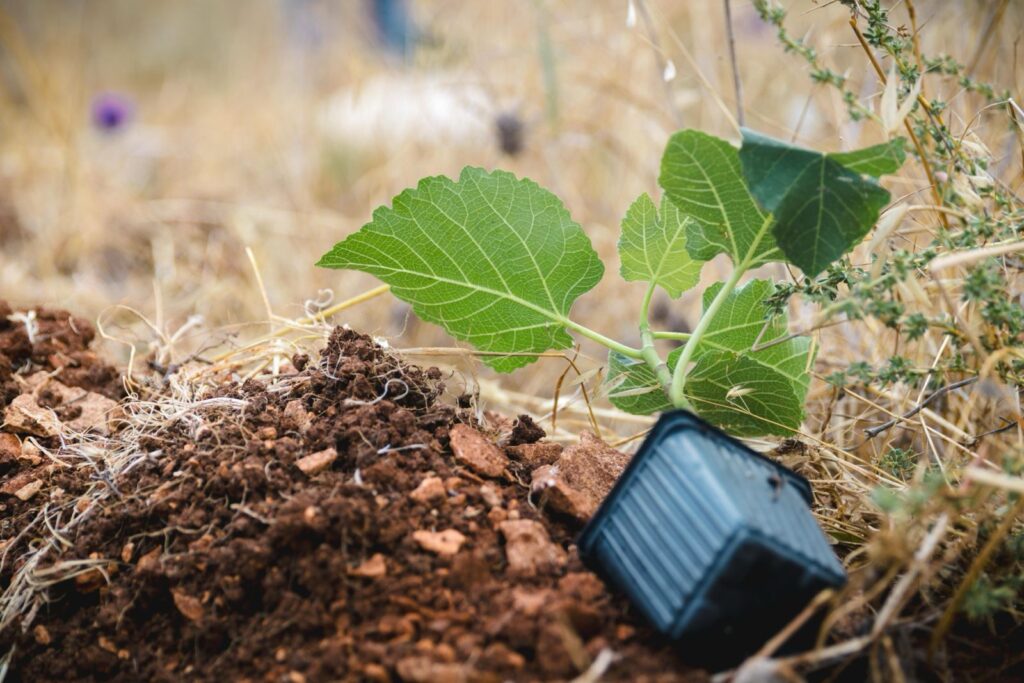
Trees have been planted across the world over many years. The question for us is: what makes us think that if we plant trees in Israel, the landscape and weather will change? The difference is that we’re planting trees with the intention of bringing forests back. Here’s how that can happen.
To start, any number of trees are planted in the land. These trees are taken care of by our dedicated and knowledgeable forester and begin to grow. To help with the water issue, we place water boxes that help get more condensation onto the trees. This process utilizes the full potential of the orographic rain that is received in the Holy Land. This is the most impactful and hands-on aspect of the entire process; it’s something that you personally can do!
Following this initial leap of faith, it is then up to nature to create forests. Trees and their roots naturally shed weight, which then returns to the soil and adds minerals to the dirt. This helps enrich the soil back to its former state. The process is slow to take flight while the trees are young, but after some time, the forests quickly change the entire climate.
As the trees grow taller, the wind that blows from the sea that created the orographic rain becomes an entirely new process. When the streamlines (air coming from the sea) hit the treeline, 60% is deflected above the forest and the other 40% goes into the trees. We’ll talk about these numbers as we’ll discuss each purpose separately.
As the 40% goes into the forest, within 1,000 meters, the air has no detectable dust in it. On average, this air is 15-18% more humid than that of ambient air (atmospheric air in its natural state). In addition to this, if hot, dry air enters the forest, it is cooled and humidified. If cold, humid air enters the forest, it is warmed and dehumidified. This air is then slowly released back into the air through the crowns of the trees.
The other 60% has a more direct effect on the weather. When the air is deflected over the forest, it causes compression in the streamlines of the wind. This extends up to twenty times the height of a tree. When this process happens, it creates more water vapor per unit volume and cools the ascending airstream. Both of these promote rainfall.
To put it simply, when trees are planted and grow, the wind blowing off the sea will come into contact with the trees. When this happens, it creates conditions that are conducive to rain. This is when the forests come back to life and change the climate in areas adjacent to it.
How Rain Interacts with Trees and Soil
The air and water that is returned to the air from the trees and the air from the sea is what creates rain on the ocean side of the forest, but what happens to the area further inland? This is when the trees take center stage in the creation of rain. As the percentages of sea-origin rain and forest-origin rain begin to change, the rain will eventually come solely from the trees. Through evaporation and transpiration (the process by which plants give off water vapor), the humidity coming from the trees themselves begins to create their own rain clouds. To put into perspective how much water vapor this can add to the air, a medium-sized elm can shed 15,000 pounds of water on a hot, clear, and dry day.
Before progressing to the next step, we’ll take some time to see how this rainfall interacts with the tree and begins to help change the composition of the soil. When rain hits a barren land, the topsoil is washed away, but when it hits a forest, the opposite occurs. As the rain falls, instead of hitting the soil at full force, the leaves and branches help to nullify the force of each droplet. This makes the rain nearly mist-like when it reaches the ground. As the rain hits the leaves, it gathers potassium, nitrogen, phosphorus, calcium, and magnesium, and distributes it to the soil. This helps to enrich the soil. A wetter climate and enriched soil is far more conducive to additional growth of flora.
To see how this tree-created rain affects areas further inland, in countries like Holland and Sweden, 40% of rainfall measured downwind from trees 12+ meters high is caused by the compression of the streamline that was mentioned earlier. Additionally, through the process of the forest creating its own clouds and rainfall, a “permanent cloud forest” begins to form on mountain peaks. From this “permanent cloud forest”, water continues to condense on the trees and further promotes regrowth of trees. This means that, if trees are planted on the mountains of Judea and Samaria, their effect can extend into the Jordan Valley.
What’s the Advantage of a Desert Becoming a Forest?
Deserts and forests both possess awe-striking beauty, so why put so much effort into a desert becoming a forest? Studies have shown incredible benefits from forests for people, animals, weather, and the climate.
Benefits for People:
- They block UV-B rays by 50%, thus lowering the risk of skin cancer.
- Neighborhoods with trees are less likely to have incidents of violence within and outside of the home.
- Trees emit phytoncides that reduce our cortisol levels and boost our immune systems.
- Trees create economic opportunities (i.e. timber, construction, produce, etc.).
Benefits for Animals:
- They provide a habitat for animals.
- Some trees can host up to 280 species of insects (food for animals).
Benefits for Weather and Temperature:
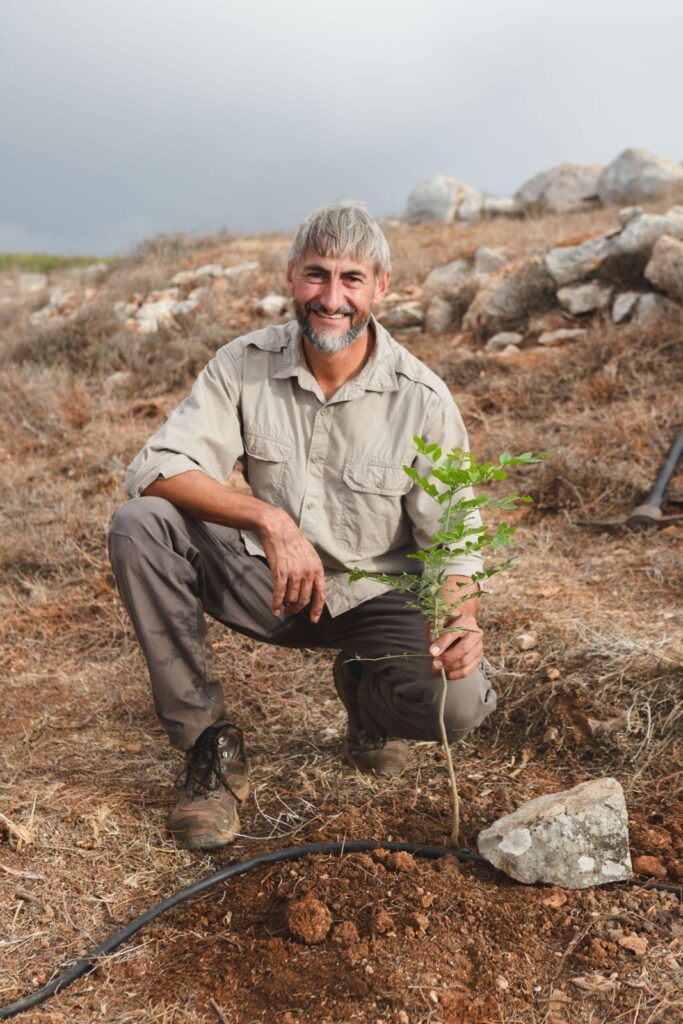
- Natural source for heating and cooling.
- Cleans the air we breathe.
- Lowers the risk of landslides of hills.
If That Doesn’t Convince You….
These benefits suffice to convince most people that turning a desert into a forest is a positive thing. However, there’s one more factor to consider: the largest benefit is that it falls in alignment with biblical prophecies. Isaiah 41:19 is a great example of this:
“I will put in the desert the cedar and the acacia, the myrtle and the olive.”
We know that, not only can this desert turn into a forest, but that it will. We can walk in the assurance that these trees will replace the current echoes of desolation.
Reforesting the Mountains of Israel is Not Out of Reach
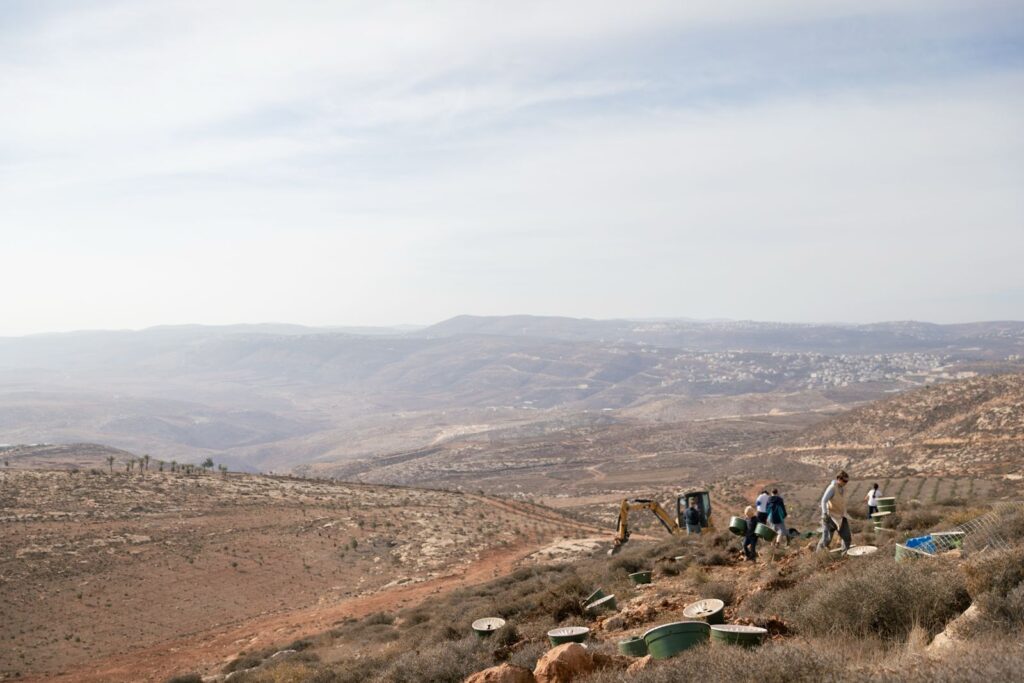
Through biblical prophecies and scientific evidence, we know that this dream is not out of reach. One day soon, the forests and the animals mentioned throughout the Bible will return to these impoverished hills. Because of this, we can confidently declare that the impact of one tree is far more than anyone could have imagined.
We invite you to step into the story and take action today by donating to plant a tree (or two, or ten!) in the land of Israel. Click here to plant.



